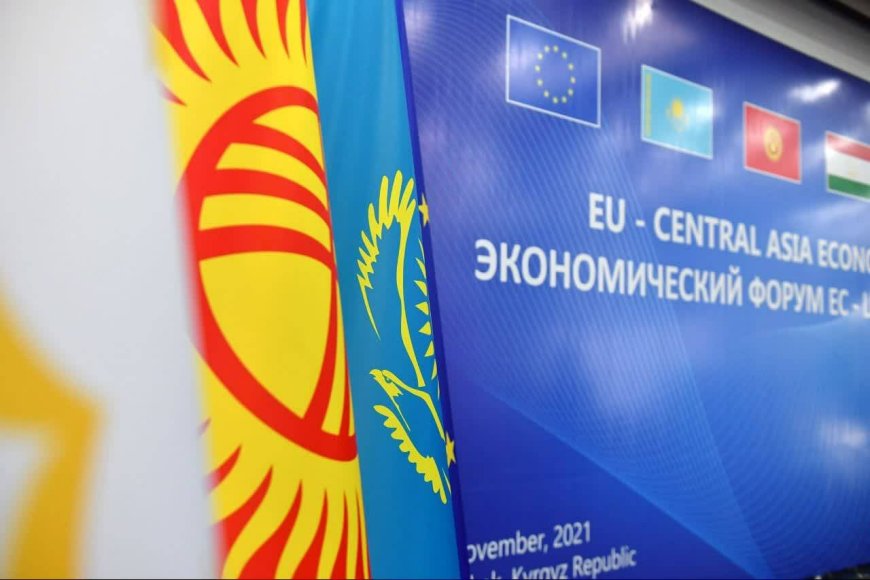Bridging Europe and Asia: The European Union's Growing Interest in Central Asia
The adoption of a new strategy by the European Union (EU) in 2019 regarding Central Asia signifies the growing relevance of the region for EU interests. The EU's unique perspective on Central Asia stems from its strategic geographic location, acting as a bridge between Europe and Asia. Additionally, Central Asia possesses abundant energy resources, with Kazakhstan being a significant crude oil supplier to the EU. Moreover, the region's substantial market potential, boasting a population of 76 million, of which 35% are under 15 years old, further underscores its importance to Europe.

Security and Migration Concerns
The EU's interest in regional security and migration has intensified due to the war in Ukraine and the unstable situation in Afghanistan. These factors have accentuated the significance of Central Asia for Europe. In an effort to advance common goals, the 19th joint meeting of the foreign ministers of Central Asian countries and the EU took place in Luxembourg, emphasizing extensive cooperation and the strategic relationship between the parties involved.
Cooperative Efforts and Strategic Alignment
During the meeting, several crucial issues were addressed, including the commitment to peace, security, and sustainable development while upholding international laws. The EU supported the restoration of sovereign equality for all Central Asian countries, particularly within the International Atomic Energy Agency (IAEA).
Additionally, the EU acknowledged the efforts made by Central Asian nations to promote amicable neighborliness, mutual understanding, and trust in the region. The EU reaffirmed the relevance of its Central Asia Strategy (2019), which prioritizes peace and prosperity, and regional cooperation for the region's future development.
Moreover, the significance of advanced partnership and cooperation agreements in enhancing bilateral relations between the EU, its member states, and Central Asian countries was emphasized.
Key Outcomes: A Comprehensive Roadmap
The roadmap acts as a strategic map, facilitating deeper engagement, fostering closer dialogue, and ensuring continuous progress in addressing shared challenges and seizing new opportunities for both Europe and Central Asia.
Europe's Shifting Interest and Rationale
Prior to 2019, the EU had limited interest in Central Asia, perceiving it merely as a neighboring region.
However, in response to various crises, particularly the military conflagration in Ukraine, the EU reevaluated its foreign policy direction. This led to the adoption of a new Central Asia Strategy, shifting the EU's approach from normative power centered in Brussels to principled pragmatism and flexibility.
In this emerging strategy, Europe aims to play a significant role alongside major regional powers, such as Russia and China. Furthermore, the EU seeks to enhance cooperation with Central Asia to fulfill its geo-economic ambitions of increasing connectivity between Europe and Asia. Central Asia is considered a vital component of Europe's global gateway plan, and the EU has pledged 750 million euros in financial aid to encourage cooperation, a gesture that has been well-received by Central Asian leaders.
Another objective for the EU is to strengthen cooperation in addressing security challenges in Central Asia and Afghanistan. The EU's interpretation of security encompasses a broader range of threats and actors compared to traditional definitions.
With its shift towards pragmatism, the EU adopts a pragmatic approach to global security issues, recognizing the impact of neighboring countries and their immediate neighbors on the EU in terms of security, terrorism, migration, and the economy. Therefore, the EU prioritizes internal and border security, aligning with its temporary pragmatic emphasis on foreign powers in close proximity to Europe. Promoting the resilience of governments and societies in Central Asia aligns with the EU's strategic interests.
However, Europe's strategy to increase its role in Central Asia confronts challenges. Aside from competing with major global players, Europe must also contend with regional powers such as Iran, Turkey, and India, which wield their own influence in the region. This competition will be arduous, and Europe recognizes that its major competitors will not yield easily. The outcome of this competition will be pivotal for the EU as an influential actor, particularly considering the substantial competition posed by China's One Belt, One Road initiative (BRI). The result will inevitably shape the EU's influence and clout in the future international system.













































